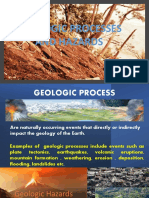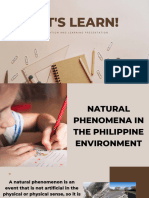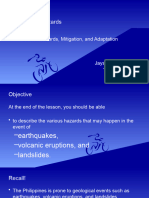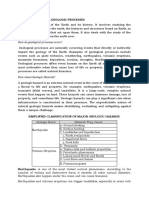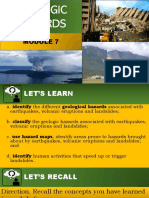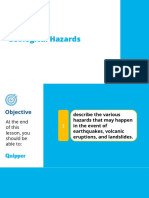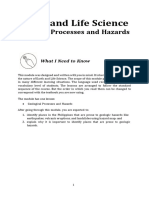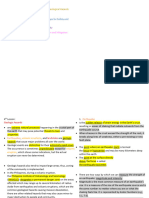0% found this document useful (0 votes)
11 views6 pagesGeologic Processes and Hazards
The document discusses various geologic processes and hazards, including earthquakes, volcanic eruptions, landslides, and hydrometeorological hazards like typhoons and floods, particularly in the context of the Philippines. It explains the measurement of earthquake magnitude using the Richter Scale, the impacts of volcanic eruptions, and the causes and effects of landslides. Additionally, it highlights the importance of hazard mapping and preparedness measures to mitigate the risks associated with these natural disasters.
Uploaded by
Rhey AnneCopyright
© © All Rights Reserved
We take content rights seriously. If you suspect this is your content, claim it here.
Available Formats
Download as DOCX, PDF, TXT or read online on Scribd
0% found this document useful (0 votes)
11 views6 pagesGeologic Processes and Hazards
The document discusses various geologic processes and hazards, including earthquakes, volcanic eruptions, landslides, and hydrometeorological hazards like typhoons and floods, particularly in the context of the Philippines. It explains the measurement of earthquake magnitude using the Richter Scale, the impacts of volcanic eruptions, and the causes and effects of landslides. Additionally, it highlights the importance of hazard mapping and preparedness measures to mitigate the risks associated with these natural disasters.
Uploaded by
Rhey AnneCopyright
© © All Rights Reserved
We take content rights seriously. If you suspect this is your content, claim it here.
Available Formats
Download as DOCX, PDF, TXT or read online on Scribd
/ 6
















